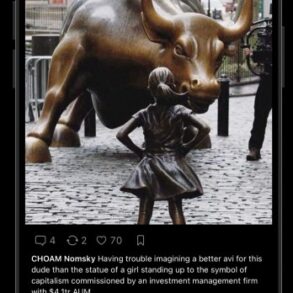Social media has undergone rapid transformation since its inception, evolving from simple online networks for connecting friends to complex, multi-faceted platforms that influence nearly every aspect of society today. The evolution of social media can be broken down into several distinct stages, each of which reflects the technological, cultural, and societal shifts of the time. Here’s a look at how social media has developed over the years.
1. The Early Days: 1990s – Early 2000s
In the early days of the internet, online communication was mainly limited to emails, instant messaging, and basic online forums. These platforms were simple, offering a way for people to connect with one another in a limited capacity.
Key Platforms:
- Usenet (1980s): One of the first forms of online communities, Usenet was used for discussions in various categories, laying the groundwork for future online conversations.
- AOL Instant Messenger (AIM) & ICQ (1996): Instant messaging platforms were some of the earliest social tools that allowed users to chat in real-time.
- Six Degrees (1997): Often considered the first social networking site, Six Degrees allowed users to create profiles, make friends, and share content, though it was short-lived.
Social Media Beginnings:
- The idea of “social networks” started taking shape in the late 1990s. Platforms like Friendster (2002) and MySpace (2003) began to allow users to create personal profiles, share content, and connect with others. These platforms were critical in establishing the concept of online social networks.
2. The Rise of Mainstream Networks: Mid-2000s – 2010
As the internet became more accessible and social networking evolved, social media exploded into the mainstream. This era saw the launch of platforms that would later dominate the social media landscape.
Key Platforms:
- Facebook (2004): Founded by Mark Zuckerberg, Facebook initially started as a college-specific platform but soon expanded to the general public in 2006. Facebook’s focus on real names and authentic connections helped set it apart from earlier social networks and quickly became the largest platform in the world.
- YouTube (2005): YouTube transformed the way we consume video, enabling users to upload, share, and watch videos in a way that was never before possible. It quickly became the dominant platform for video content creation.
- Twitter (2006): Twitter introduced a new form of communication with its 140-character limit, emphasizing quick, real-time updates. It allowed for a new way of public interaction, leading to real-time news sharing and political discourse.
- LinkedIn (2003): LinkedIn was created as a professional networking platform, focusing on connecting individuals within business and career spaces.
- MySpace (2003): Though eventually overshadowed by Facebook, MySpace was a huge part of early social media, offering customizable profiles and serving as a music-sharing platform.
Key Features Emerging:
- News Feed: Facebook introduced the “News Feed” in 2006, changing the way users interacted with the platform by displaying updates from friends and pages.
- Photo Sharing: MySpace and Facebook became platforms for users to share their life experiences through photos, setting the stage for future visual-based social media.
3. The Mobile Revolution and Visual Media: 2010 – 2015
The introduction of smartphones marked the next major shift in social media. Platforms began to adapt to mobile-first experiences, and the visual nature of the internet took center stage.
Key Platforms:
- Instagram (2010): Instagram’s focus on visual content allowed users to share photos and short videos, revolutionizing personal branding, influencer marketing, and visual storytelling. It quickly became a dominant force in social media.
- Snapchat (2011): Known for its disappearing messages, Snapchat introduced a new, more transient way of communicating. Its Stories feature (2013) would later be adopted by other platforms like Instagram and Facebook.
- Pinterest (2010): Pinterest allowed users to “pin” images to virtual boards, creating a platform for inspiration and discovery, particularly in areas like home design, fashion, and food.
- Vine (2012): Vine popularized the 6-second looping video, which was a precursor to the type of short-form video that would later be perfected by platforms like TikTok.
Key Shifts:
- Mobile First: Social media began prioritizing mobile-first design, ensuring that platforms were optimized for use on smartphones and tablets.
- Influencer Culture: Instagram, in particular, saw the rise of influencers—individuals who built large followings and turned their social media presence into a career. Brands began to recognize the potential of influencer marketing, and the “influencer” became a new cultural phenomenon.
- Storytelling: Platforms like Snapchat and Instagram introduced “Stories”—short, temporary video or photo content that encouraged more informal and personal communication.
4. Video Takes Over: 2016 – Present
In the mid-2010s, video content became dominant on social media, thanks to the popularity of short-form videos and live streaming.
Key Platforms:
- TikTok (2016): Originally launched as Musical.ly, TikTok revolutionized short-form video with its easy-to-use editing tools, viral challenges, and algorithm-driven content discovery. TikTok became a dominant force in social media, particularly among Gen Z, and reshaped how viral content spreads.
- Live Streaming (2015-Present): Platforms like Facebook, Instagram, YouTube, and Twitter introduced live-streaming features, allowing users to broadcast events and personal moments in real time.
- Facebook Watch (2017): Facebook launched its own video platform, Facebook Watch, as part of an effort to compete with YouTube and TikTok by encouraging video content creation.
Key Trends:
- Video Content: With the explosion of video platforms like TikTok and YouTube, social media became dominated by videos. Live streaming and short-form videos have become the most engaging content types.
- Interactive Content: Social media has evolved to become increasingly interactive, with features like polls, quizzes, and comment sections facilitating real-time engagement.
- Social Commerce: Shopping directly through social media platforms like Instagram and Facebook has exploded, with integrated e-commerce systems allowing users to purchase products without leaving the app.
5. The Future: 2025 and Beyond
Social media is continuing to evolve, and we can expect to see the following developments in the years to come:
- Augmented Reality (AR) and Virtual Reality (VR): Platforms like Facebook (now Meta) are investing in the Metaverse—a virtual space where users can interact with each other in 3D environments. AR and VR are expected to become key parts of the social media experience, allowing for more immersive and interactive social networking.
- Decentralization and Blockchain: The rise of decentralized networks and blockchain technology could create a new era of social media that gives users more control over their data and online identities.
- AI Integration: Artificial intelligence will play a more significant role in personalizing social media feeds, creating content, and even moderating platforms to combat harmful behaviors and misinformation.
- Privacy and Regulation: With growing concerns over privacy and data security, we may see more regulation around social media platforms and how they handle user data. Governments and organizations are beginning to scrutinize social media companies for the role they play in shaping public discourse and spreading misinformation.
From its humble beginnings as online networks to its current role as a global ecosystem, social media has undergone a dramatic transformation. It has reshaped how we communicate, share content, and even do business. As technology advances, social media will continue to evolve, opening up new ways for people to connect, engage, and express themselves. While challenges like privacy concerns, mental health impacts, and misinformation persist, the future of social media promises to be just as dynamic and influential as its past.



